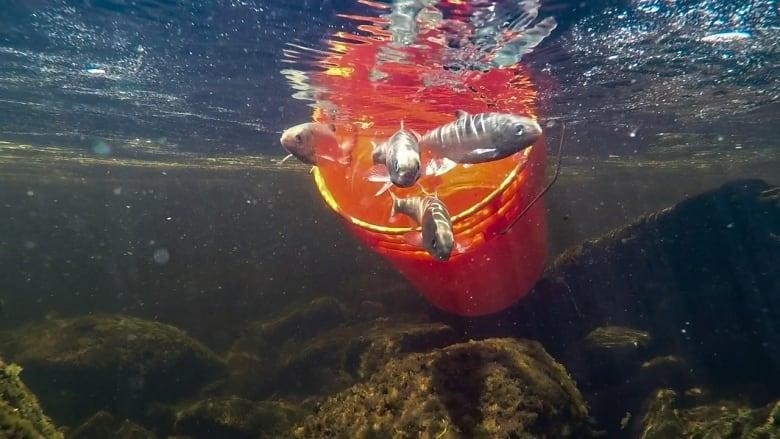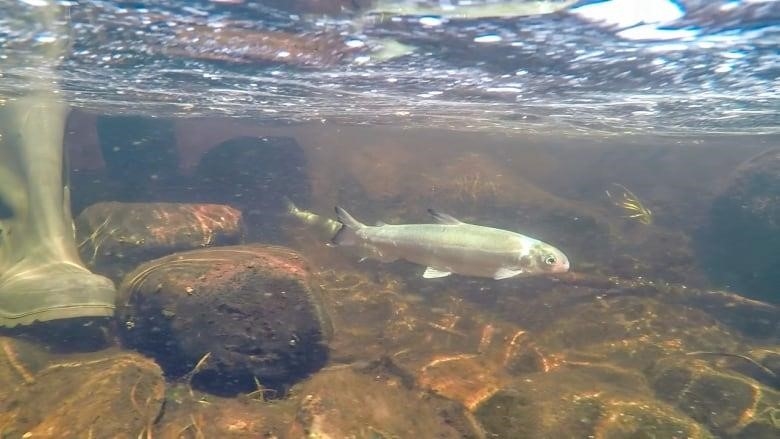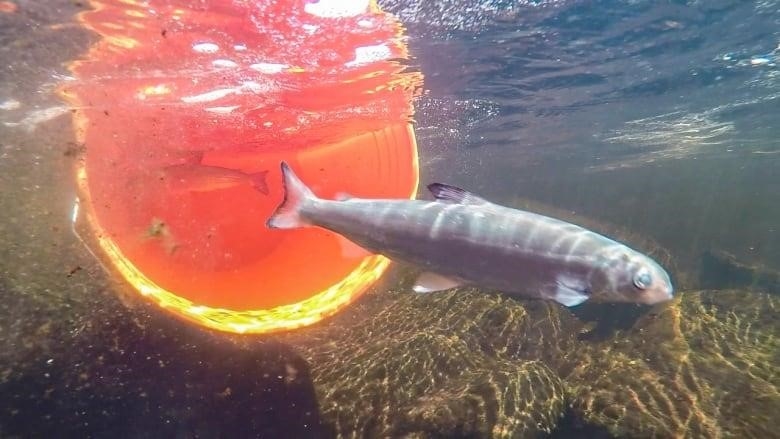
Last week, the last 30 tagged Atlantic whitefish were set free near Bridgewater
In order to save one of Canada’s most endangered freshwater fish, specimens bred in captivity and released into the Nova Scotia watershed, which has the world’s only remaining wild population, are now being tracked electronically.
Last week, the last 30 Atlantic whitefish with tags were set free in the Petite Rivière system behind the town of Bridgewater on the South Shore of the province.
“We’ve put fish in different parts of the system, including the lake, the river, and the salt water estuary,” said Jeremy Broome, a biologist with Fisheries and Oceans Canada who is part of the recovery team.
“So it’s important for us to try to figure out which of these is most likely to keep us alive.”
Tags inserted with needl
A hypodermic needle was used to put tiny transponder tags into 150 one-year-old fish that had been born at the Dalhousie University Aquatron marine research facility in Halifax.
The fish were put to sleep, given a week to heal, and then set free in different places in the watershed. After getting used to salt water, the fish were put back into the estuary.
When a fish with a tag swims by, devices set up at narrow spots along the river system will send a signal.
Broome said, “We are trying out different approaches and putting our eggs in different baskets to see what might work best.”
“If we can figure out that more fish survive when they are released into the estuary and we see more fish come back, that would be a sign that we should keep going with that plan.”
Landlocked for a centur
This species of whitefish is an ancient relative of the Atlantic salmon. They are anadromous by nature, which means they are born in fresh water, travel to the ocean, and come back to spawn.
They only live in the watershed of the Petite Rivière, which was cut off from the rest of the world for a hundred years by a dam and supplies the Town of Bridgewater with water.
In 2012, a fish ladder was built there.
The recovery team hopes to see proof in the next year or two that the 150 juveniles that were released without tags last year and those that were tagged in 2023 come back to spawn.

What’s wrong with the Atlantic whitefish and wh
The species was the first fish in Canada to be listed as endangered by the Committee on the Status of Endangered Wildlife. This was almost 40 years ago.
Threats to the whitefish include warming water and the introduction of smallmouth bass and chain pickerel, which are not native to the area.
When young Atlantic whitefish are found, they are taken an hour away to the Aquatron, where they are being raised in captivity.
This spring, unlike previous years, no young or young-at-heart whitefish were caught in the traps that were set up all over the system.
There are now more Atlantic whitefish in Dalhousie’s Aquatron than there are in the wild.
“We wouldn’t have any choices if we didn’t have the brood stock we were able to raise at that facility and the young birds that are now coming from there. We’re still not in a good place, but if we didn’t have that facility and that program, we’d be in a very bad place,” Broome said.
Looking for another hom
The recovery team is also trying to find other watersheds in Nova Scotia where the species could be moved and still live.
Several possible sites have been chosen, and this summer, surveys will be done. The next step is to talk to people.
“I think we’re at a point where we have to make a move and start trying these things,” he said.

A 20-year round of getting bette
As part of a government-mandated plan to bring the species back from the brink of extinction, a captive breeding program was set up at the Mersey Biodiversity Centre in Nova Scotia in 2003.
In 2013, the Harper government shut down the program and literally tore down the Mersey diversity center.
A few months later, the remaining wild chain pickerel were found in the Petite Rivière watershed, where the voracious, invasive chain pickerel were found.
Thousands of whitefish raised at the diversity center were released into a holding lake behind the Burnside industrial park in Dartmouth. No one made it.
Between 2014, when the chain pickerel was first seen, and 2018, no adult whitefish were seen alive.
Dalhousie to the rescu
Since then, Dalhousie stepped in to offer its Aquatron facility, first as a Noah’s Ark to save the species from going extinct and then to host a captive breeding program.
The university has also helped build a streamside rearing facility, which is a smaller version of the diversity center that the previous federal government tore down.
- Inside the ‘Noah’s Ark’ for whitefish at Dalhousie University
Even putting them back into the Petite Rivière system is the same work that was done for the captive breeding program that was stopped.
Still, Broome doesn’t give up hope.
“This kind of fish is really from Nova Scotia. “It can only be found here, in this province. This is the only place in the whole world where it can be found,” he said.
“So it’s up to us to deal with it. It’s our job to keep it alive and safe on Earth.”
